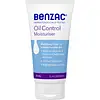What's inside
What's inside
 Key Ingredients
Key Ingredients

 Benefits
Benefits

 Concerns
Concerns

 Ingredients Side-by-side
Ingredients Side-by-side

Water
Skin ConditioningAluminum Starch Octenylsuccinate
AbsorbentCyclopentasiloxane
EmollientButylene Glycol
HumectantSilica
AbrasiveDimethicone
EmollientIsopropyl Palmitate
EmollientAcrylates/C10-30 Alkyl Acrylate Crosspolymer
Emulsion StabilisingBisabolol
MaskingDimethiconol
EmollientEnantia Chlorantha Bark Extract
Skin ConditioningHexyl Cinnamal
PerfumingLimonene
PerfumingMenthyl Ethylamido Oxalate
Skin ConditioningOleanolic Acid
Skin ConditioningParfum
MaskingPhenoxyethanol
PreservativeSodium Polyacrylate
AbsorbentWater, Aluminum Starch Octenylsuccinate, Cyclopentasiloxane, Butylene Glycol, Silica, Dimethicone, Isopropyl Palmitate, Acrylates/C10-30 Alkyl Acrylate Crosspolymer, Bisabolol, Dimethiconol, Enantia Chlorantha Bark Extract, Hexyl Cinnamal, Limonene, Menthyl Ethylamido Oxalate, Oleanolic Acid, Parfum, Phenoxyethanol, Sodium Polyacrylate
Water
Skin ConditioningGlycerin
HumectantDimethicone
EmollientIsocetyl Stearate
EmollientAlcohol Denat.
AntimicrobialSilica
AbrasiveDimethicone Crosspolymer
Emulsion StabilisingAcrylamide
Sodium Acryloyldimethyltaurate Crosspolymer
Emulsion StabilisingVp/Va Copolymer
Methyl Methacrylate
Methyl Methacrylate Crosspolymer
Butylene Glycol
HumectantPEG-100 Stearate
Cocamide Mea
EmulsifyingSarcosine
Skin ConditioningGlyceryl Stearate
EmollientTriethanolamine
BufferingIsohexadecane
EmollientPerlite
AbsorbentCapryloyl Salicylic Acid
ExfoliatingTetrasodium EDTA
Pentylene Glycol
Skin ConditioningPolysorbate 80
EmulsifyingAcrylates/C10-30 Alkyl Acrylate Crosspolymer
Emulsion StabilisingSalicylic Acid
MaskingParfum
MaskingWater, Glycerin, Dimethicone, Isocetyl Stearate, Alcohol Denat., Silica, Dimethicone Crosspolymer, Acrylamide, Sodium Acryloyldimethyltaurate Crosspolymer, Vp/Va Copolymer, Methyl Methacrylate, Methyl Methacrylate Crosspolymer, Butylene Glycol, PEG-100 Stearate, Cocamide Mea, Sarcosine, Glyceryl Stearate, Triethanolamine, Isohexadecane, Perlite, Capryloyl Salicylic Acid, Tetrasodium EDTA, Pentylene Glycol, Polysorbate 80, Acrylates/C10-30 Alkyl Acrylate Crosspolymer, Salicylic Acid, Parfum
 Reviews
Reviews

Ingredients Explained
These ingredients are found in both products.
Ingredients higher up in an ingredient list are typically present in a larger amount.
Acrylates/C10-30 Alkyl Acrylate Crosspolymer is a synthetic polymer. It is used to thicken and improve the texture of products. Due to its properties, it can prevent water and oil ingredients from separating.
Butylene Glycol (or BG) is used within cosmetic products for a few different reasons:
Overall, Butylene Glycol is a safe and well-rounded ingredient that works well with other ingredients.
Though this ingredient works well with most skin types, some people with sensitive skin may experience a reaction such as allergic rashes, closed comedones, or itchiness.
Learn more about Butylene GlycolDimethicone is a type of synthetic silicone created from natural materials such as quartz.
What it does:
Dimethicone comes in different viscosities:
Depending on the viscosity, dimethicone has different properties.
Ingredients lists don't always show which type is used, so we recommend reaching out to the brand if you have questions about the viscosity.
This ingredient is unlikely to cause irritation because it does not get absorbed into skin. However, people with silicone allergies should be careful about using this ingredient.
Note: Dimethicone may contribute to pilling. This is because it is not oil or water soluble, so pilling may occur when layered with products. When mixed with heavy oils in a formula, the outcome is also quite greasy.
Learn more about DimethiconeParfum is a catch-all term for an ingredient or more that is used to give a scent to products.
Also called "fragrance", this ingredient can be a blend of hundreds of chemicals or plant oils. This means every product with "fragrance" or "parfum" in the ingredients list is a different mixture.
For instance, Habanolide is a proprietary trade name for a specific aroma chemical. When used as a fragrance ingredient in cosmetics, most aroma chemicals fall under the broad labeling category of “FRAGRANCE” or “PARFUM” according to EU and US regulations.
The term 'parfum' or 'fragrance' is not regulated in many countries. In many cases, it is up to the brand to define this term.
For instance, many brands choose to label themselves as "fragrance-free" because they are not using synthetic fragrances. However, their products may still contain ingredients such as essential oils that are considered a fragrance by INCI standards.
One example is Calendula flower extract. Calendula is an essential oil that still imparts a scent or 'fragrance'.
Depending on the blend, the ingredients in the mixture can cause allergies and sensitivities on the skin. Some ingredients that are known EU allergens include linalool and citronellol.
Parfum can also be used to mask or cover an unpleasant scent.
The bottom line is: not all fragrances/parfum/ingredients are created equally. If you are worried about fragrances, we recommend taking a closer look at an ingredient. And of course, we always recommend speaking with a professional.
Learn more about ParfumSilica, also known as silicon dioxide, is a naturally occurring mineral. It is used as a fine, spherical, and porous powder in cosmetics.
Though it has exfoliant properties, the function of silica varies depending on the product.
The unique structure of silica enhances the spreadability and adds smoothness, making it a great texture enhancer.
It is also used as an active carrier, emulsifier, and mattifier due to its ability to absorb excess oil.
In some products, tiny microneedles called spicules are made from silica or hydrolyzed sponge. When you rub them in, they lightly polish away dead skin layers and enhance the penetration of active ingredients.
Learn more about SilicaWater. It's the most common cosmetic ingredient of all. You'll usually see it at the top of ingredient lists, meaning that it makes up the largest part of the product.
So why is it so popular? Water most often acts as a solvent - this means that it helps dissolve other ingredients into the formulation.
You'll also recognize water as that liquid we all need to stay alive. If you see this, drink a glass of water. Stay hydrated!
Learn more about Water